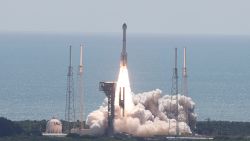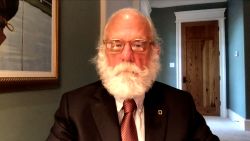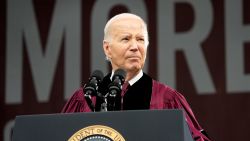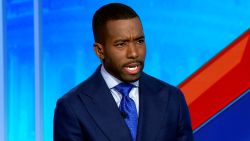President Donald Trump has signed off on an initial trade agreement with China that would avoid imminent US tariffs and reduce the rates of existing duties in exchange for a Chinese promise to purchase American farm goods, US officials and others familiar with the agreement said.
Trump’s trade team briefed the President on the agreement during a mid-afternoon meeting at the White House.
Trump had already announced the broad contours of the “phase one” deal in October, and the two sides have been haggling over specifics since then. The “phase one” deal does not address the major structural changes to China’s economy that Trump has sought.
The terms of the agreement include a delay in new tariffs on $160 billion in Chinese-made consumer electronics and toys scheduled to go into effect December 15, as well as a reduction by half of some existing US tariffs, said a person familiar with the deal.
In exchange, China has promised to purchase US agricultural products. China has made similar pledges in past negotiations, but has mostly failed to follow through on large purchases.
The progress with China comes days after Trump reached a deal with congressional Democrats on his revised trading pact with Mexico and Canada, fulfilling two big priorities he campaigned on in 2016.
The breakthrough with Beijing comes weeks after intense negotiations between the world’s two economic superpowers resumed in October.
Trade uncertainty has weighed heavily on the economy, a centerpiece of the President’s re-election campaign. On Wednesday, Federal Reserve chairman Jerome Powell avoided commenting directly on any specific trade agreement with China or Mexico and Canada, but acknowledged that such progress “would remove uncertainty and be a positive” for the US economy.
“Delaying the imposition of tariffs into February or beyond would allow the President to weather the Senate impeachment trial and also take a victory lap to celebrate Senate passage of USMCA,” said James Lucier, managing director at Capital Alpha Partners. “Both these developments would put the President in a stronger position for future trade talks.”
Earlier in the day, Trump hinted that progress was being made between the both sides, tweeting, “Getting VERY close to a BIG DEAL with China. They want it and so do we!”
The optimistic tone was a contrast from more than a week ago, when the President suggested he liked the idea of waiting until after the 2020 election.
“I have no deadline,” Trump told reporters in London.
Close US-China trade watchers have viewed such comments by the President as an effort to maximize pressure on Chinese leader Xi Jinping to win as many concessions as possible. US negotiators have also been pressing China to commit to agricultural purchases, a request that Beijing has been reluctant to agree to all year.
“Trade team from both sides are maintaining close communications,” Gao Feng, spokesman at China’s Commerce Ministry, said at news briefing Thursday, without providing any specifics.
But in recent days, there’s been increased optimism the two sides would be able to reach an initial phase one deal as negotiators are moving quickly to review text of an agreement.
“What people expects is a phase one deal will take place and tariffs won’t go up,” Jamie Dimon, JPMorgan Chase CEO and head of the Business Roundtable told reporters on Wednesday. “If those things don’t happen, it will be a negative for the marketplace and a small negative for global GDP.”























